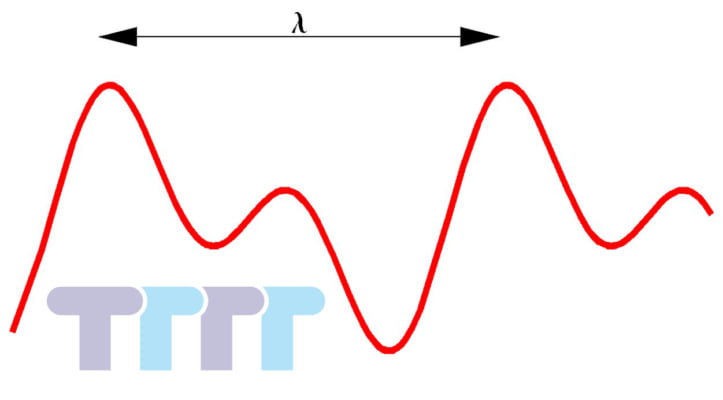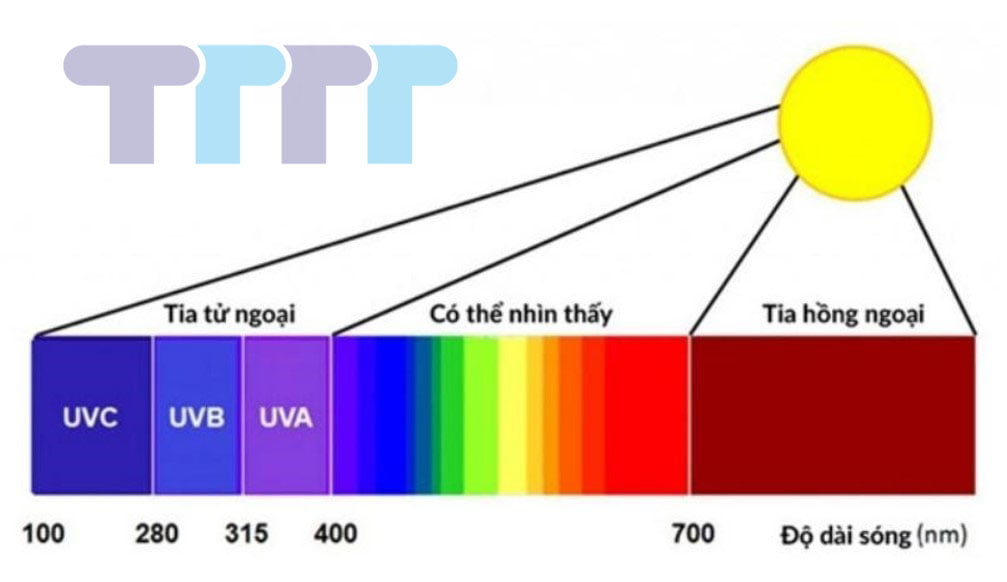What is wavelength? That is a question that many people are interested in, and find out with the questions of what wavelength x-rays have? What is the formula for calculating electromagnetic wavelength? Today TTTT will learn about wavelength is and basic information about wavelengths including special wavelengths and wavelengths of visible light.
You may be interested in the following articles:
- What is the concept of frequency and how to calculate it simply?
- Why is Vietnam’s electrical frequency 50Hz and not 60Hz?

Contents
What is a wavelength? Wavelength is the distance between two points
What is wavelength? Wavelength is the shortest distance between two points oscillating in the same phase or wavelength is TTTT the distance between two points that are crests (the point at which the wave sets its maximum value), generally between two repeating structures of the wave, at a certain time.
It is also said simply that the wavelength is the distance traveled by the wave in one cycle, but a period of the wave is calculated from the highest point of the wave and the wave propagates and back to that highest point is called the wavelength. wave. The wavelength is often referred to as Lambda (λ).
Electromagnetic and radiation wavelength formula, x-ray has wavelength
Formula for calculating electromagnetic wavelength
The formula for calculating electromagnetic wavelength includes two most common calculation methods:
The period as mentioned above is to calculate the travel time of a wavelength, so when there is a period (T) the wavelength (λ) is equal to the speed of the wave (v) times the period (T).
Frequency is the number of repetitions of the wavelength within one second so when there is a frequency (f) the wavelength (λ) is equal to the speed of the wave (v) divided by the frequency (f).
The speed of the wave (v) is the speed of propagation of vibrations in the medium, for each different medium, the speed of the wave is different, but the speed of the wave in a vacuum is the largest v = c (speed of light) = 300 000 000 m/s.
See more: Learn about the exciter system used for DC generators.
Radiation, x-rays with wavelength

Light rays and electromagnetic waves have different wavelengths and are divided into several categories including:
Radio wave: is a type of electronic radiation commonly used as radio.
Microwaves: are super high frequency waves.
Infrared: is electromagnetic radiation also known as red water.
Visible Light: Visible light is an electron beam with a wavelength that can be seen by humans.
Ultraviolet rays: are electromagnetic waves also known as ultraviolet rays or UV rays.
X-Rays: are electromagnetic waves also known as X-rays or X-rays.
Gamma ray: is an extremely high frequency electromagnetic or photon radiation.
Learn about battery chargers here.
Radiation series with electromagnetic/light wavelength
Name of the radiation electromagnetic wave/light | Wavelength |
| Gamma rays have wavelengths | Less than 0.01 nm |
X-rays have wavelengths | From 0.01 nm to 10 nm |
| Ultraviolet rays have wavelengths | From 10 nm to 380 nm |
Infrared rays with wavelengths | From 380 nm to 760 nm |
| Visible light has wavelengths | From 760 nm to 1 mm |
Microwaves with wavelengths | From 1 mm to 1 m |
| Radio waves with wavelengths | From 1 m to 100 000 km |
Wavelength of visible light:
- Purple light: From 380nm to 440nm.
- Indigo light: From 430nm to 460nm.
- Blue light: From 450nm to 510nm.
- Green light: From 500nm to 575nm.
- Yellow light: From 570nm to 600nm.
- Orange light: From 590nm to 650nm.
- Red light: From 640nm to 760nm.
See more: Detailed information about radio waves
Company name:
TTTT GLOBAL co Ltd,.
Address: Landmark 4 Building, Vinhomes Central Park, 720A Dien Bien Phu Str, Ward 22, Binh Thanh District, Ho Chi Minh City, Vietnam.
Website: https://ttttglobal.com/en/
Hotline: +84286 2728 334
Email: Info@ttttglobal.com
CATEGORY: TECHNICAL QUESTIONS AND ANSWERS











